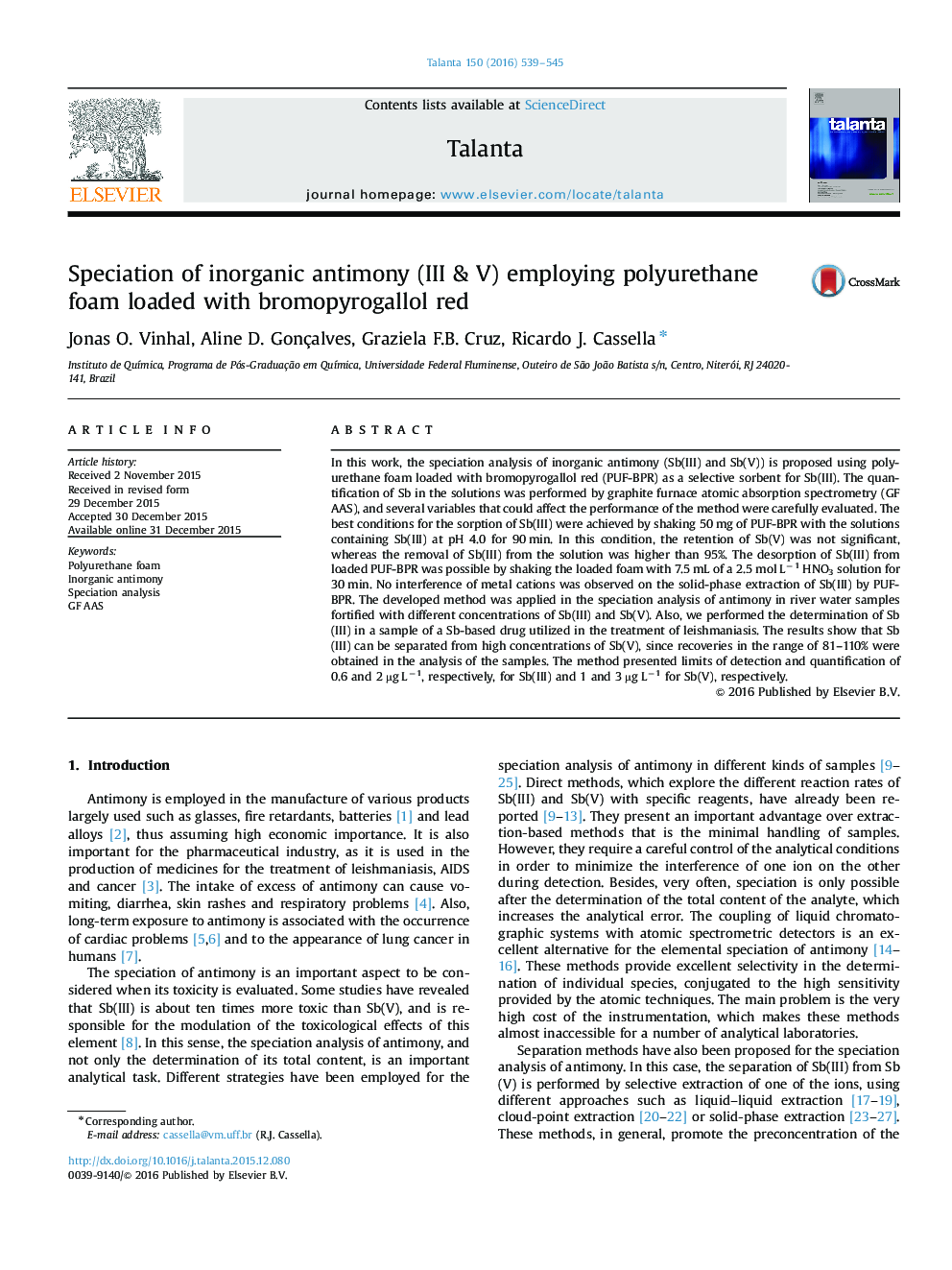| کد مقاله | کد نشریه | سال انتشار | مقاله انگلیسی | نسخه تمام متن |
|---|---|---|---|---|
| 1242204 | 1495785 | 2016 | 7 صفحه PDF | دانلود رایگان |

• A solid-phase extraction method is proposed for Sb speciation analysis.
• A novel polyurethane-based sorbent was employed for selective Sb(III) retention.
• The determination of Sb in the extracts was performed by GF AAS.
• PUF-BPR was able to retain approximately 190 µg of Sb(III) per gram of foam.
In this work, the speciation analysis of inorganic antimony (Sb(III) and Sb(V)) is proposed using polyurethane foam loaded with bromopyrogallol red (PUF-BPR) as a selective sorbent for Sb(III). The quantification of Sb in the solutions was performed by graphite furnace atomic absorption spectrometry (GF AAS), and several variables that could affect the performance of the method were carefully evaluated. The best conditions for the sorption of Sb(III) were achieved by shaking 50 mg of PUF-BPR with the solutions containing Sb(III) at pH 4.0 for 90 min. In this condition, the retention of Sb(V) was not significant, whereas the removal of Sb(III) from the solution was higher than 95%. The desorption of Sb(III) from loaded PUF-BPR was possible by shaking the loaded foam with 7.5 mL of a 2.5 mol L−1 HNO3 solution for 30 min. No interference of metal cations was observed on the solid-phase extraction of Sb(III) by PUF-BPR. The developed method was applied in the speciation analysis of antimony in river water samples fortified with different concentrations of Sb(III) and Sb(V). Also, we performed the determination of Sb(III) in a sample of a Sb-based drug utilized in the treatment of leishmaniasis. The results show that Sb(III) can be separated from high concentrations of Sb(V), since recoveries in the range of 81–110% were obtained in the analysis of the samples. The method presented limits of detection and quantification of 0.6 and 2 µg L−1, respectively, for Sb(III) and 1 and 3 µg L−1 for Sb(V), respectively.
Figure optionsDownload as PowerPoint slide
Journal: Talanta - Volume 150, 1 April 2016, Pages 539–545